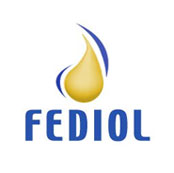Mineral Oil hydrocarbons
The vegetable oil and fat industry is committed to food safety and quality. Each vegetable oil and fat is subject to the highest standards of quality and safety controls, from the seeds, to the ingredient in food products or to the bottles. FEDIOL members are monitoring closely the new scientific discoveries and analytical findings and are taking actions on substances that are relevant to edible vegetable oils and fats. This includes mineral oil hydrocarbons (MOH).
MOH is a generic name which embraces a complex mixture of hydrocarbons of mineral oil origin. These can come from a diversity of sources (from contamination from the environment, agriculture, processing, transport, but also from legal uses or from transfer from packaging materials). MOH are often divided into two main types: mineral oil saturated hydrocarbons (MOSH) and mineral oil aromatic hydrocarbons (MOAH). MOH should not be confused with other hydrocarbons of natural origin or synthetic origin.
The MOH issue has been on the radar screen of the vegetable oil and fat industry for several years. Our industry has therefore engaged in a number of actions as part of its food quality and safety commitment.
Recent documents:
- FEDIOL Statement on the release of the EFSA opinion on MOHs
- FEDIOl statement following the release of EFSA opinion for consultation
- FEDIOL observations (March 2021) - Analyses of mineral oil hydrocarbons in vegetable oils and fats: reliability and reporting
- Statement on the JRC guidance on sampling, analysis and data reporting for the monitoring of mineral oil hydrocarbons in food and food contact materials
Preventing contamination in vegetable oils and fats
Jointly under the FEDIOL umbrella, efforts have been made to develop best practices to prevent contamination. These best practices have been compiled in a FEDIOL Code of Practice for the management of mineral oil hydrocarbon presence in vegetable oils and fats intended for food uses.
Developing and improving analytical methods for vegetable oils and fats
The reliability of analytical methods is extremely important when detecting possible contamination of food products with MOH. FEDIOL has therefore supported the development of standardized methods to analyze MOSH and MOAH in vegetable oils and fats (see ISO 17780:2015 and EN 16995:2017 ). Such standardized methods should be favored today for vegetable oils and fats.
Since the publication of these standards, much progress has been made in mineral oil analysis and methods have been optimized by laboratories. However, there is still a high variability of results between laboratories due to several analytical challenges (presence of natural or synthetic compounds co-eluting with mineral oil hydrocarbons, complex processing of results…). While various attempts and promises in achieving very low limits of quantification are made, it should be kept in mind that the lower the quantification limit is, the higher the uncertainty. Along with other food industry players, FEDIOL contributed to an article which provides a deeper insight on the reliability/reproducibility of the analytical methods used by commercial laboratories offering testing services to determine residues of mineral oil in foods. The article also identifies possible gaps and suggests improvements that may enhance the reliability of the data.
The JRC guidance for sampling, analysis and data reporting issued in February 2019 represents an important step to achieve further harmonization and better laboratory practices. As illustrated in these FEDIOL observations further steps and guidance are however still needed to ensure that data on MOH are fully reliable, especially in vegetable oils and fats, which as recognized by the guidance, represent challenging matrices in terms of methodology and interpretation. To address the issue of high variability of results observed between laboratories, FEDIOL has developed analytical and reporting recommendations for the analysis of MOH in vegetable oils and fats. These are intended for laboratories performing MOH analyses for the vegetable oil and fat sector.
Banning white mineral oil and paraffin wax from the FEDIOL list of foodstuffs
As a proactive measure, FEDIOL decided in 2017 to remove “white mineral oil” and “paraffin wax” from the FEDIOL acceptable list of foodstuffs (which serves as indication of previous loads in the case of truck transport of edible oils).
Work by authorities
In March 2010, the EU Commission gave a mandate to EFSA to carry out a comprehensive risk assessment on mineral oil hydrocarbons in food. See here.
The EFSA opinion was released on 06 June 2012. See here.
In 2017, the European Commission issued a Recommendation on the monitoring of MOH in food and in materials and articles intended to come into contact with food, in order to better characterize the risk associated with these substances.
In 2020, the European Commission asked EFSA to update the 2012 opinion based on recent occurrence data as well as new toxicity studies. This will be the basis to consider the possible setting of maximum levels in the EU for mineral oil hydrocarbons in food.

